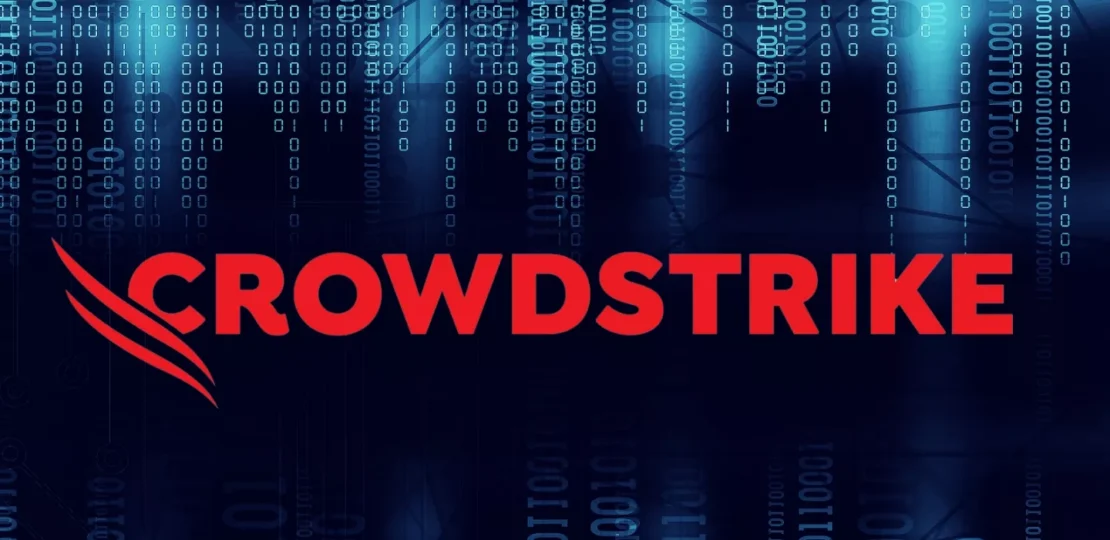
Introduction to CrowdStrike
In today’s digital landscape, cybersecurity is more crucial than ever. With an increase in cyber threats and data breaches, companies like CrowdStrike have stepped into the spotlight. This industry leader claims to provide top-notch protection against cyber attacks through advanced technology and threat intelligence. But as the stakes rise, so do questions about its effectiveness and reliability.
Many businesses rely on CrowdStrike’s services to safeguard their valuable assets. However, recent events have sparked debates within the cybersecurity community regarding the company’s practices and accuracy. As we dive deeper into this crowdstrike issue explained, you’ll discover what every organization needs to know before putting their trust—and their security—in one single provider’s hands.
History and Background of the Company
CrowdStrike was founded in 2011 by George Kurtz, Dmitri Alperovitch, and Gregg Marston. The trio aimed to revolutionize cybersecurity through cloud-native technology.
The company quickly gained attention for its innovative approach to threat detection. By leveraging artificial intelligence and machine learning, CrowdStrike offered real-time protection against cyber threats.
In a short span of time, it became known for its Falcon platform. This product combined endpoint security with advanced analytics. Organizations across various sectors began adopting CrowdStrike’s solutions due to their effectiveness.
As the digital landscape evolved, so did the company’s strategy. They expanded their offerings to include incident response services and proactive threat hunting.
With roots in Silicon Valley’s tech scene, CrowdStrike has positioned itself as a leader in cybersecurity innovation while maintaining a focus on customer-centric solutions.
Recent Security Breaches and Controversies Involving CrowdStrike
CrowdStrike has recently faced scrutiny due to several high-profile security breaches. These incidents have raised questions about the effectiveness of its solutions in protecting clients from sophisticated cyber threats.
One notable controversy involved a major ransomware attack targeting an organization using CrowdStrike’s services. Despite employing advanced technology, the breach exposed vulnerabilities that critics argue should have been mitigated by their systems.
Additionally, accusations about mismanagement during investigations have surfaced, leading some to wonder whether CrowdStrike’s team could adequately respond to real-time threats while maintaining transparency with clients.
The debates surrounding these events highlight concerns over the company’s methodologies and the actual performance of its cybersecurity tools. As businesses increasingly depend on digital infrastructure, the implications of such controversies can be significant for both reputation and trust.
Criticisms of CrowdStrike’s Methodology and Accuracy
CrowdStrike has faced scrutiny regarding its methodologies. Critics argue that the company’s reliance on proprietary technology can lead to a lack of transparency. When organizations seek clarity, they often find themselves in murky waters.
Another point of contention is the accuracy of threat attribution. Many experts highlight instances where CrowdStrike’s claims were later challenged by independent investigations. This raises questions about how definitive their findings truly are.
Furthermore, some feel that CrowdStrike may overstate threats to justify its services. Businesses want reassurance, but there’s a fine line between caution and alarmism.
These criticisms have sparked debates within cybersecurity circles. They underscore the need for objective assessments as companies navigate complex security landscapes without losing sight of reliability.
The Impact on Businesses and Organizations
The impact of the CrowdStrike issue explained on businesses and organizations is profound. Many rely on their solutions for cybersecurity, but recent controversies have raised concerns about reliability.
When a high-profile incident occurs, it sends shockwaves through the industry. Organizations may find themselves questioning the effectiveness of their security measures. This uncertainty can lead to hesitancy in renewing contracts or adopting new technologies.
Financial implications are significant as well. Companies facing breaches often incur hefty costs related to remediation and lost revenue due to downtime. Trust erodes quickly when customers feel vulnerable.
Moreover, stakeholders pay close attention to how these incidents unfold. A tarnished reputation can hinder partnerships and affect stock prices dramatically.
Companies must reassess their reliance on any single vendor amidst such turmoil. Diversifying cybersecurity strategies becomes essential for safeguarding assets against evolving threats.
Alternatives to CrowdStrike
When exploring alternatives to CrowdStrike, several notable options stand out. Each offers unique features tailored to different cybersecurity needs.
One popular choice is SentinelOne. This platform emphasizes autonomous threat detection and response, using artificial intelligence to combat sophisticated attacks in real-time.
Another contender is Sophos, which combines endpoint protection with network security solutions. Its user-friendly interface appeals to organizations looking for ease of management alongside robust defenses.
For those prioritizing cloud-based services, Lookout provides mobile threat defense combined with web filtering capabilities. This option is particularly valuable for businesses relying on remote workforces.
Microsoft Defender has gained traction due to its integration within the Windows ecosystem. Many enterprises appreciate its seamless functionality and continuous updates as part of a broader security strategy.
These alternatives can help companies tailor their cybersecurity measures more effectively based on specific requirements or preferences.
Steps Companies Can Take to Protect Themselves Against Cyber Attacks
Cyber attacks can happen to any organization. Taking proactive steps is essential for safeguarding sensitive data.
First, companies should conduct regular security audits. Assess existing vulnerabilities and prioritize addressing them.
Employee training is crucial as well. Staff must understand phishing scams and other common threats that could compromise security.
Implementing multi-factor authentication adds an extra layer of protection. This makes unauthorized access more difficult even if credentials are compromised.
Regular software updates can’t be overlooked either. Keeping systems current helps patch known vulnerabilities that cybercriminals might exploit.
Developing an incident response plan prepares organizations for potential breaches. Knowing how to react swiftly can minimize damage when a threat arises.
By following these steps, businesses enhance their resilience against the ever-evolving landscape of cyber threats.
Recent Controversies and Criticisms
CrowdStrike has faced scrutiny over its handling of various security incidents. Critics argue that the company’s public disclosures often lack transparency. This can lead to confusion and mistrust among clients.
Additionally, some experts have raised concerns about CrowdStrike’s reliance on proprietary technology. They question whether this approach hinders independent verification of claims regarding threat detection and attribution.
The political implications surrounding certain investigations also draw criticism. Allegations suggest that crowdstrike issue explained may be influenced by partisan interests, which complicates its role as a cybersecurity provider.
Moreover, high-profile incidents have sparked debates about the effectiveness of its services. Stakeholders are increasingly vigilant about how well the company safeguards sensitive information against evolving threats in an unpredictable landscape.
Impact on the Company’s Reputation and Stock
CrowdStrike’s reputation has faced significant challenges in recent years. The security breaches and controversies have raised questions about its reliability and effectiveness. These concerns can tarnish a brand viewed as an industry leader.
As news of these issues spreads, investors grow wary. This reaction often translates into volatility in stock prices. When confidence wavers, so does the market’s perception of value.
Furthermore, companies that rely on CrowdStrike for their cybersecurity may reconsider their partnerships. A ripple effect can occur when businesses seek alternatives to safeguard against potential vulnerabilities.
Public sentiment plays a crucial role too. As users share experiences online, negative reviews can amplify doubts surrounding the company’s capabilities—further impacting its standing within the tech community and beyond.
While CrowdStrike continues to innovate, it must address these criticisms effectively to rebuild trust among stakeholders and regain its stronghold in the market.
Response from CrowdStrike
CrowdStrike has been proactive in addressing the concerns raised by critics. The company emphasizes its commitment to transparency and continuous improvement in its cybersecurity solutions.
In response to recent controversies, CrowdStrike has increased communication with clients and stakeholders. They aim to clarify their methodologies and enhance trust within the industry.
The firm has also invested in refining its threat intelligence capabilities. This initiative seeks to bolster the accuracy of their data analysis while minimizing any potential inaccuracies that have drawn criticism.
Additionally, crowdstrike issue explained is actively engaging with security researchers and experts. By fostering collaboration, they hope to strengthen their defenses against evolving cyber threats.
This approach reflects a willingness to adapt and learn from past challenges as they navigate a complex landscape of cybersecurity issues.
Conclusion: The Future of CrowdStrike
The future of CrowdStrike hinges on its ability to navigate the complex landscape of cybersecurity challenges. As cyber threats continue to evolve, businesses will be watching closely how the company addresses recent criticisms and security breaches.
crowdstrike issue explained advanced technology and innovative approach have positioned it as a key player in the industry. However, maintaining trust is crucial for retaining clients. Transparency about methodologies and enhancements based on feedback can bolster its reputation.
Investors are also keeping an eye on market reactions. The stock’s performance may reflect public sentiment towards CrowdStrike’s strategies moving forward.
As organizations increasingly rely on digital infrastructures, strong cybersecurity measures become paramount. CrowdStrike has an opportunity to reinforce its commitment to client safety while adapting to emerging threats.
Navigating these issues effectively could determine not only the course of crowdstrike issue explained but also influence the broader cybersecurity landscape for years ahead.
RELATED POSTS
View all


